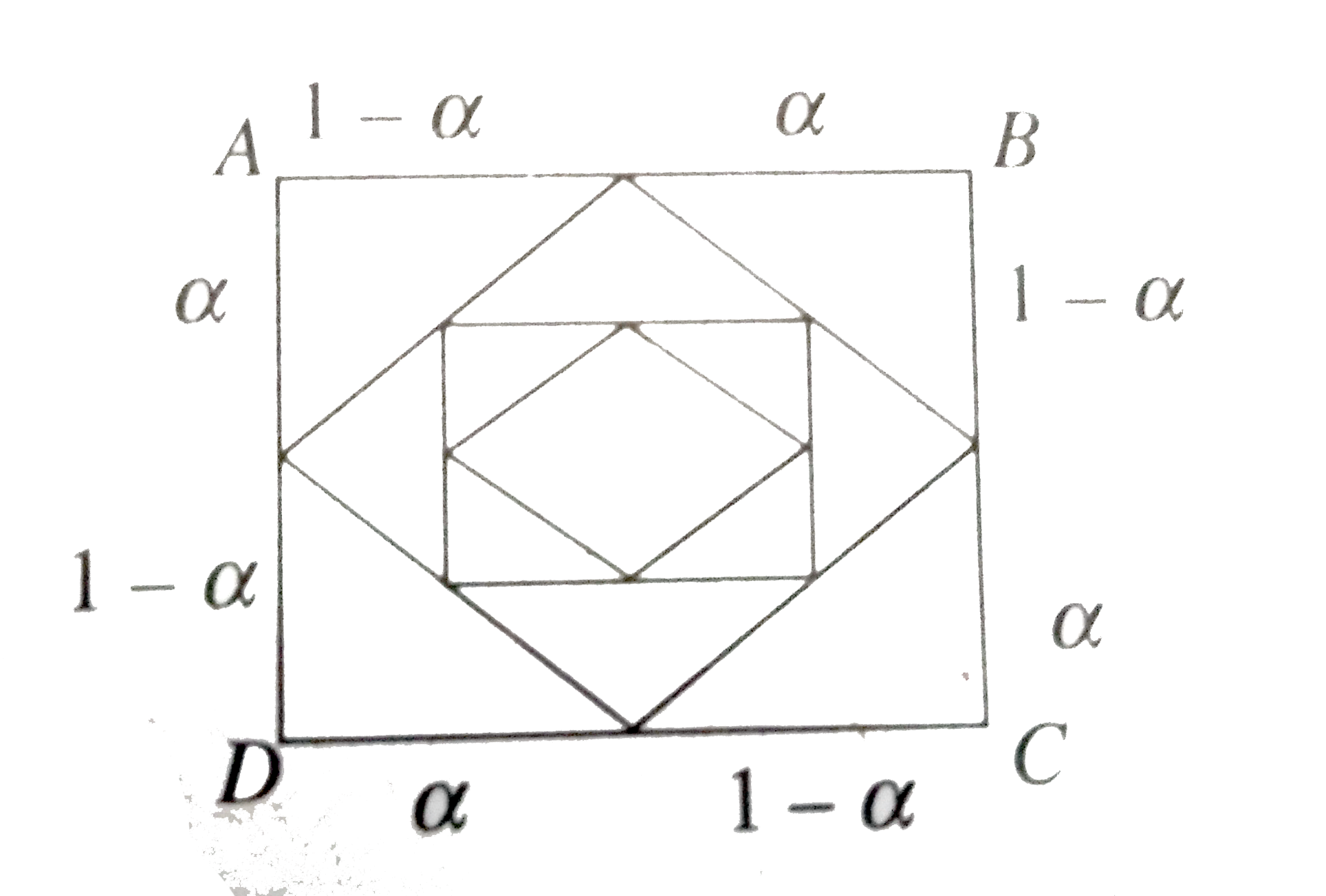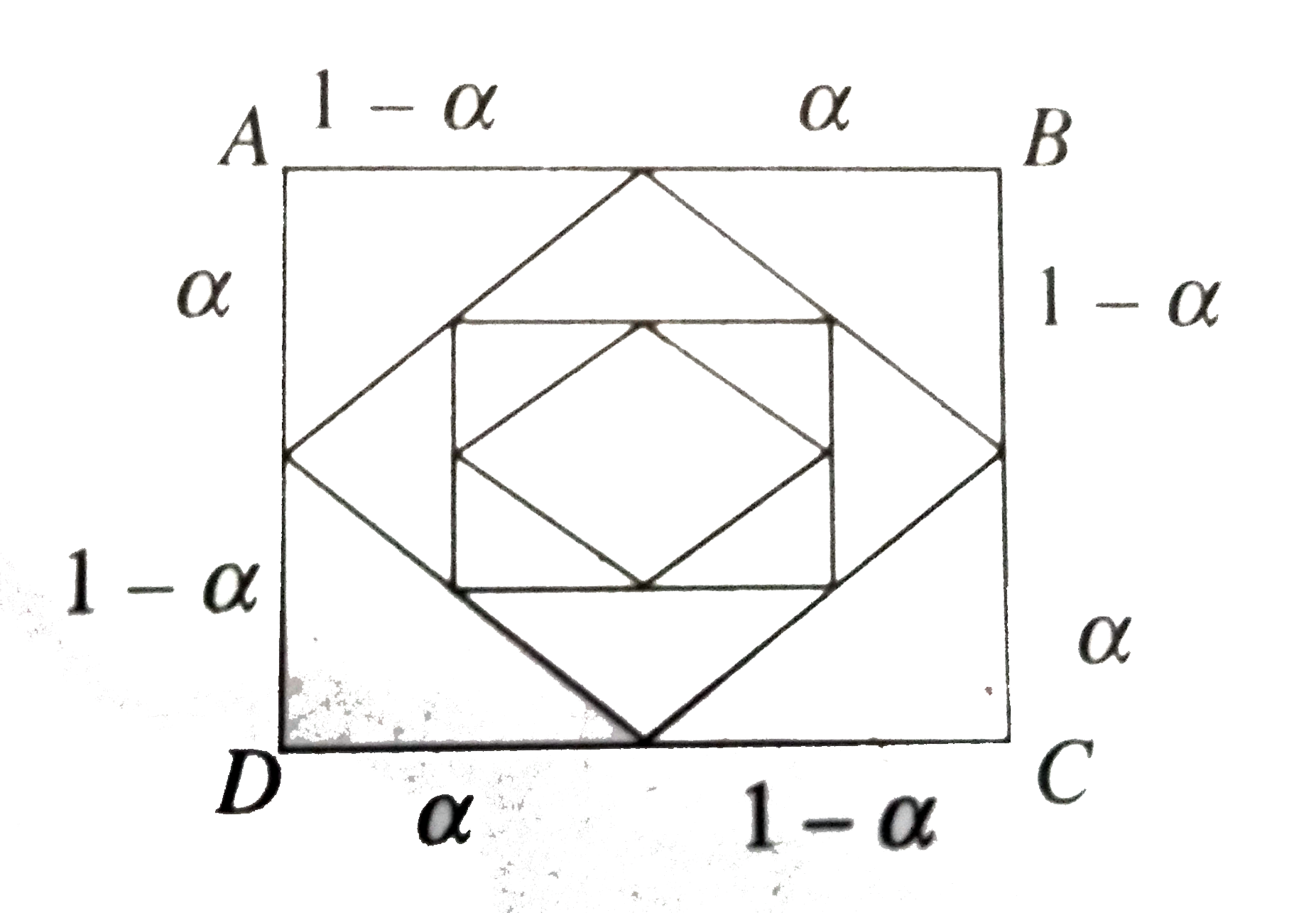Complete Solutions to Comprehension of chapter PROGRESSION AND SERIES of Class 12 book with complete answers and questions
| Class 12 | MATHS |
| Chapter | PROGRESSION AND SERIES |
| CENGAGE NEW DPP | Comprehension |
| Number Of Questions | 7 |
| Academic Year | 2023-24 |
The `1^(st)` , `2^(nd)` and `3^(rd)` terms of an arithmetic series are `a`, `b` and `a^(2)` where `'a'` is negative. The `1^(st)`, `2^(nd)` and `3^(rd)` terms of a geometric series are `a`, `a^(2)` and `b` respectively.
The sum of infinite geometric series is
View SolutionThe `1^(st)` , `2^(nd)` and `3^(rd)` terms of an arithmetic series are `a`, `b` and `a^(2)` where `'a'` is negative. The `1^(st)`, `2^(nd)` and `3^(rd)` terms of a geometric series are `a`, `a^(2)` and `b` respectively.
The sum of the `40` terms of the arithmetic series is
View Solutionimg src="https://d10lpgp6xz60nq.cloudfront.net/physics_images/CEN_ALG_DPP_4_2_E01_231_Q01.png" width="80%"gt
Let `ABCD` is a unit square and each side of the square is divided in the ratio `alpha : (1-alpha) (0 lt alpha lt 1)` . These points are connected to obtain another square. The sides of new square are divided in the ratio `alpha : (1-alpha)` and points are joined to obtain another square. The process is continued idefinitely. Let `a_(n)` denote the length of side and `A_(n)` the area of the `n^(th)` square
If`alpha=(1)/(3)`, then the least value of `n` for which `A_(n) gt (1)/(10)` is
View Solution
Let `ABCD` is a unit square and each side of the square is divided in the ratio `alpha : (1-alpha) (0 lt alpha lt 1)` . These points are connected to obtain another square. The sides of new square are divided in the ratio `alpha : (1-alpha)` and points are joined to obtain another square. The process is continued idefinitely. Let `a_(n)` denote the length of side and `A_(n)` the area of the `n^(th)` square
The value of `alpha` for which `sum_(n=1)^(oo)A_(n)=(8)/(3)` is/are
View Solution Let `ABCD` is a unit square and each side of the square is divided in the ratio `alpha : (1-alpha) (0 lt alpha lt 1)` . These points are connected to obtain another square. The sides of new square are divided in the ratio `alpha : (1-alpha)` and points are joined to obtain another square. The process is continued idefinitely. Let `a_(n)` denote the length of side and `A_(n)` the area of the `n^(th)` square
Let `ABCD` is a unit square and each side of the square is divided in the ratio `alpha : (1-alpha) (0 lt alpha lt 1)` . These points are connected to obtain another square. The sides of new square are divided in the ratio `alpha : (1-alpha)` and points are joined to obtain another square. The process is continued idefinitely. Let `a_(n)` denote the length of side and `A_(n)` the area of the `n^(th)` square
The value of `alpha` for which side of `n^(th)` square equal to the diagonal of `(n+1)^(th)` square is
View SolutionLet `f(n)` denote the `n^(th)` terms of the seqence of `3,6,11,18,27,….` and `g(n)` denote the `n^(th)` terms of the seqence of `3,7,13,21,….` Let `F(n)` and `G(n)` denote the sum of `n` terms of the above sequences, respectively. Now answer the following:
`lim_(ntooo)(f(n))/(g(n))=`
View SolutionLet `f(n)` denote the `n^(th)` terms of the seqence of `3,6,11,18,27,….` and `g(n)` denote the `n^(th)` terms of the seqence of `3,7,13,21,….` Let `F(n)` and `G(n)` denote the sum of `n` terms of the above sequences, respectively. Now answer the following:
`lim_(ntooo)(F(n))/(G(n))=`
View Solution
Comprehension questions and complete solutions for chapter PROGRESSION AND SERIES of CENGAGE MATHS (ENGLISH) of Class 12
All Exercises from CENGAGE NEW DPP Class 12 MATHS PROGRESSION AND SERIES
- ARCHIVES ( JEE ADVANCED )(SINGLE CORRECT ANSWER TYPE )
- ARCHIVES ( JEE MAIN )(SINGLE CORRECT ANSWER TYPE )
- ARCHIVES (MATRIX MATCH TYPE )
- ARCHIVES (MULTIPLE CORRECT ANSWERS TYPE )
- ARCHIVES (NUMERICAL VALUE TYPE )
- Comprehension
- CONCEPT APPLICATION EXERICISE 5.1
- CONCEPT APPLICATION EXERICISE 5.2
- CONCEPT APPLICATION EXERICISE 5.3
- CONCEPT APPLICATION EXERICISE 5.4
- CONCEPT APPLICATION EXERICISE 5.5
- CONCEPT APPLICATION EXERICISE 5.6
- CONCEPT APPLICATION EXERICISE 5.7
- CONCEPT APPLICATION EXERICISE 5.8
- CONCEPT APPLICATION EXERICISE 5.9
- EXERCIESE ( LINKED COMPREHENSION TYPE )
- EXERCIESE ( MATRIX MATCH TYPE )
- EXERCIESE ( MULTIPLE CORRECT ANSWER TYPE )
- EXERCIESE ( NUMERICAL VALUE TYPE )
- EXERCIESE ( SINGLE CORRECT ANSWER TYPE )
- ILLUSTRATION 5.1
- ILLUSTRATION 5.10
- ILLUSTRATION 5.100
- ILLUSTRATION 5.101
- ILLUSTRATION 5.102
- ILLUSTRATION 5.103
- ILLUSTRATION 5.104
- ILLUSTRATION 5.105
- ILLUSTRATION 5.11
- ILLUSTRATION 5.12
- ILLUSTRATION 5.13
- ILLUSTRATION 5.14
- ILLUSTRATION 5.15
- ILLUSTRATION 5.16
- ILLUSTRATION 5.17
- ILLUSTRATION 5.18
- ILLUSTRATION 5.19
- ILLUSTRATION 5.2
- ILLUSTRATION 5.20
- ILLUSTRATION 5.21
- ILLUSTRATION 5.22
- ILLUSTRATION 5.23
- ILLUSTRATION 5.24
- ILLUSTRATION 5.25
- ILLUSTRATION 5.26
- ILLUSTRATION 5.27
- ILLUSTRATION 5.28
- ILLUSTRATION 5.29
- ILLUSTRATION 5.3
- ILLUSTRATION 5.30
- ILLUSTRATION 5.31
- ILLUSTRATION 5.32
- ILLUSTRATION 5.33
- ILLUSTRATION 5.34
- ILLUSTRATION 5.35
- ILLUSTRATION 5.36
- ILLUSTRATION 5.37
- ILLUSTRATION 5.38
- ILLUSTRATION 5.39
- ILLUSTRATION 5.4
- ILLUSTRATION 5.40
- ILLUSTRATION 5.41
- ILLUSTRATION 5.42
- ILLUSTRATION 5.43
- ILLUSTRATION 5.44
- ILLUSTRATION 5.45
- ILLUSTRATION 5.46
- ILLUSTRATION 5.47
- ILLUSTRATION 5.48
- ILLUSTRATION 5.49
- ILLUSTRATION 5.5
- ILLUSTRATION 5.50
- ILLUSTRATION 5.51
- ILLUSTRATION 5.52
- ILLUSTRATION 5.53
- ILLUSTRATION 5.54
- ILLUSTRATION 5.55
- ILLUSTRATION 5.56
- ILLUSTRATION 5.57
- ILLUSTRATION 5.58
- ILLUSTRATION 5.59
- ILLUSTRATION 5.6
- ILLUSTRATION 5.60
- ILLUSTRATION 5.61
- ILLUSTRATION 5.62
- ILLUSTRATION 5.63
- ILLUSTRATION 5.64
- ILLUSTRATION 5.65
- ILLUSTRATION 5.66
- ILLUSTRATION 5.67
- ILLUSTRATION 5.68
- ILLUSTRATION 5.69
- ILLUSTRATION 5.7
- ILLUSTRATION 5.70
- ILLUSTRATION 5.71
- ILLUSTRATION 5.72
- ILLUSTRATION 5.73
- ILLUSTRATION 5.74
- ILLUSTRATION 5.75
- ILLUSTRATION 5.76
- ILLUSTRATION 5.77
- ILLUSTRATION 5.78
- ILLUSTRATION 5.79
- ILLUSTRATION 5.8
- ILLUSTRATION 5.80
- ILLUSTRATION 5.81
- ILLUSTRATION 5.82
- ILLUSTRATION 5.83
- ILLUSTRATION 5.84
- ILLUSTRATION 5.85
- ILLUSTRATION 5.86
- ILLUSTRATION 5.87
- ILLUSTRATION 5.88
- ILLUSTRATION 5.89
- ILLUSTRATION 5.9
- ILLUSTRATION 5.90
- ILLUSTRATION 5.91
- ILLUSTRATION 5.92
- ILLUSTRATION 5.93
- ILLUSTRATION 5.94
- ILLUSTRATION 5.95
- ILLUSTRATION 5.96
- ILLUSTRATION 5.97
- ILLUSTRATION 5.98
- ILLUSTRATION 5.99
- Multiple Correct Answer
- Single correct Answer
- SOLVED EXAMPLES 5.1
- SOLVED EXAMPLES 5.10
- SOLVED EXAMPLES 5.11
- SOLVED EXAMPLES 5.12
- SOLVED EXAMPLES 5.13
- SOLVED EXAMPLES 5.14
- SOLVED EXAMPLES 5.15
- SOLVED EXAMPLES 5.2
- SOLVED EXAMPLES 5.3
- SOLVED EXAMPLES 5.4
- SOLVED EXAMPLES 5.5
- SOLVED EXAMPLES 5.6
- SOLVED EXAMPLES 5.7
- SOLVED EXAMPLES 5.8
- SOLVED EXAMPLES 5.9